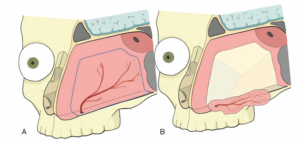The aim of oroantral fistula management is to repair the defect, restoring the integrity of the sinus and oral cavity and preventing sinus infections.


The aim of oroantral fistula management is to repair the defect, restoring the integrity of the sinus and oral cavity and preventing sinus infections.

Compared to traditional open surgery, endoscopic procedures are associated with less patient morbidity and shorter postoperative recovery.

We describe a transseptal approach by elevating bilateral mucoperichondrial flaps and approaching a lesion from the contralateral side.
With no other option than to wait and see for post-thyroidectomy recurrent laryngeal nerve paralysis, nimodipine and/or steroid use may be viable options in the postoperative setting.

The current literature unequivocally demonstrates that endoscopic percutaneous dilatational tracheostomy is at least as safe as open surgical tracheostomy.

The best practice recommendation is not to routinely use prophylactic antibiotics with nasal packing, as antibiotic use does not appear to reduce complications and is not cost-effective.


Expert physician panelists shared their advice on the many ways of surgically repairing a hole in the eardrum at a session during the 2022 Triological Society Combined Sections Meeting.
Patients with EA/TEF frequently have aerodigestive sequelae, suggesting the need for early otolaryngology evaluation in their care.

Is there a role for bedside biopsy in the evaluation of acute invasive fungal rhinosinusitis?